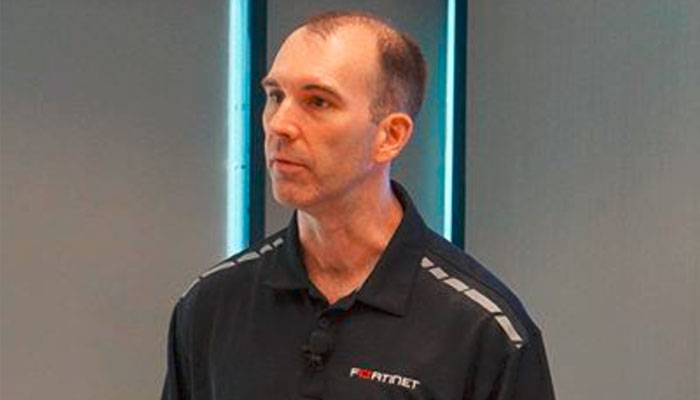“Every alert in FortiAIOps includes a recommended resolution. It can help predict failures based on trained ML models and detect probable root causes by periodically reviewing configurations.”
Chris Hinsz – Senior Director, Products & Solutions Marketing at Fortinet
Network operations center (NOC) staff are tasked with not just keeping the network up but also keeping it working well, so users remain happy. But the more complex a network becomes, the more likely it is to have problems. A perfect storm of accelerated digital initiatives, user demands for better experiences, and the expansion of hybrid workforces mean networks are more complicated to manage than ever.
Many organizations have hybrid networks that span on- and off-premises environments. Trying to manage these fluid, adaptive, performance-hungry, and perimeter-less networks has stretched many IT teams to the breaking point.
NOC teams track network availability, performance, trends, and other data using various tools, but the number of solutions on a large complex network generate so much information, it’s almost impossible to sift through.
Over time, more solutions have started using artificial intelligence (AI) and machine learning (ML) to deal with the massive amounts of data. AI-based management tools for IT operations (AIOps) are designed to maximize network visibility, improve response times to anomalies, and reduce ticket volume by making it possible for NOC staff to proactively remediate network issues.
The problem is that it’s often difficult to find solutions that cover everything. Organizations that are struggling to manage complex networks need a converged network and security platform that also takes advantage of AIOps. Combining a cybersecurity mesh architecture with AIOps can provide a level of automated detection and response that is impossible in traditionally siloed environments. By taking this approach, organizations can maximize network visibility, improve response times to anomalies, and reduce ticket volume by proactively remediating network issues.
The Fortinet Difference
Unlike many vendors, Fortinet uniquely converges networking and security across the LAN, wireless LAN, and wide-area network components such as SD-WAN and WAN gateway devices and ties everything together with a single operating system and management console. This convergence makes it possible for organizations to leverage wide-ranging AI and ML in Fortinet FortiAIOps. Convergence also decreases the WAN bandwidth consumption for AIOps data. This AIOps platform can systematically ingest the vast amount of network data being produced, so IT teams can move toward being proactive instead of spending their time on post-incident debugging tasks.
Fortinet is the only vendor capable of integrating both security and AIOps across the entire network. When it comes to AIOps, Fortinet has a number of advantages both in terms of our history and our overall approach to cybersecurity.
Fortinet has spent the past decade honing our AI and ML technology, and today FortiGuard Labs can analyze more than 100 billion security events per day from more than 6 million devices. This data then informs the more than 1 billion daily security updates to Fortinet’s products, which work to identify zero-day threats and malware, reduce the number of false alarms, detect insider threats, and enable both automated and human cybersecurity responses.
FortiAIOps is built upon Fortinet’s long history of AI and ML innovation and is able to seamlessly span the entire network across LAN, SD-WAN, wireless LAN, including 5G gateways, because the Fortinet suite of networking, connectivity, access, and security solutions have all been organically designed from the ground up to interoperate as a single platform.
Integrating Security and AIOps Across the Network
With Fortinet, all networking and security elements already share information, so instead of having 20+ individual views into small segments of the network, you have a common view of everything. This native interoperability enhances AI/ML tools by de-cluttering the information flow and ensuring that the AI processes as much information about any event as possible, while avoiding WAN bandwidth consumption. It also means that as new technologies or resources are added to a deployment, the result can be additive rather than deploying a siloed device that must be monitored, trended, and analyzed independently.
FortiAIOps not only identifies problems, it also suggests solutions. Every alert in FortiAIOps includes a recommended resolution. It can help predict failures based on trained ML models and detect probable root causes by periodically reviewing configurations.
The combination of our converged platform, designed to support networking and security, with AI-based operations enables insights and improvements to be implemented across the network. Bringing AI technology to network operations can transform IT operations. And because Fortinet technology is designed to grow and adapt as your network evolves, it can be used with even the most dynamic and distributed business environments now and into the future.


